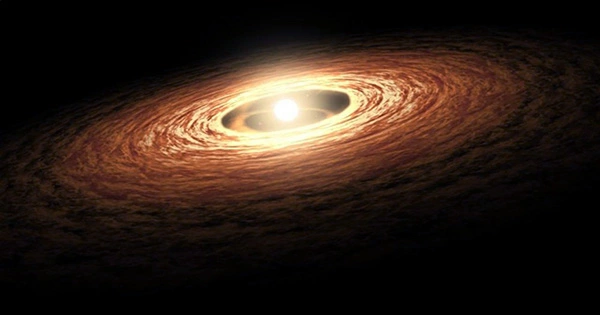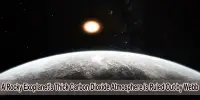A nine-atom organic molecule has been discovered inside a young star’s planet-forming disk. The material is dimethyl ether, the biggest molecule ever discovered in such a setting. The findings involve the young star IRS 48, which were published in the journal Astronomy & Astrophysics. Astronomers had seen dimethyl ether in star-forming clouds, so they knew it existed, but not in the areas where planets form. The findings provide information on the microscopic building components of planets as well as the organic compounds that gave rise to life on Earth.
“We can learn more about the origins of life on our planet from these findings, and hence gain a greater understanding of the possibilities for life in other planetary systems. It’ll be fascinating to see how these discoveries fit into the larger picture “Nashanty Brunken, a Master’s student at Leiden Observatory, part of Leiden University, stated in a statement that she was the primary author. Dust grains coated in ice tend to mix in space due to complex chemistry. Simple molecules like carbon monoxide can undertake chemical reactions there, resulting in more complex compounds like dimethyl ether. These bigger molecules become noticeable as the light of the stars warms these dust grains and causes the ice that covers them to sublimate.
“It’s incredibly amazing to see these bigger molecules in discs for the first time.” “We were worried for a while that we wouldn’t be able to observe them,” said co-author Alice Booth, a researcher at Leiden Observatory. “What makes this even more interesting is that we now know that these larger, more complex molecules are accessible to feed the disc’s budding planets.” This was previously unknown since these molecules are usually concealed in the ice in most systems.” The Atacama Large Millimeter/submillimeter Array made the observations feasible (ALMA). Dimethyl ether is used to make chemicals that are vital to life, such as amino acids, which are the building blocks of proteins.
“We are ecstatic that we can now begin to trace these complicated chemicals on their path from the clouds that generate stars to planet-forming discs and comets.” “Hopefully, with further data, we will be able to explain the genesis of primordial chemicals in our own Solar System,” said co-author Nienke van der Marel of the Leiden Observatory. The team aims to expand on these findings with observations made with the Extremely Large Telescope, which is now under construction and will be able to zoom into the region of the planet-formation disk where Earth-sized planets might be forming.
















